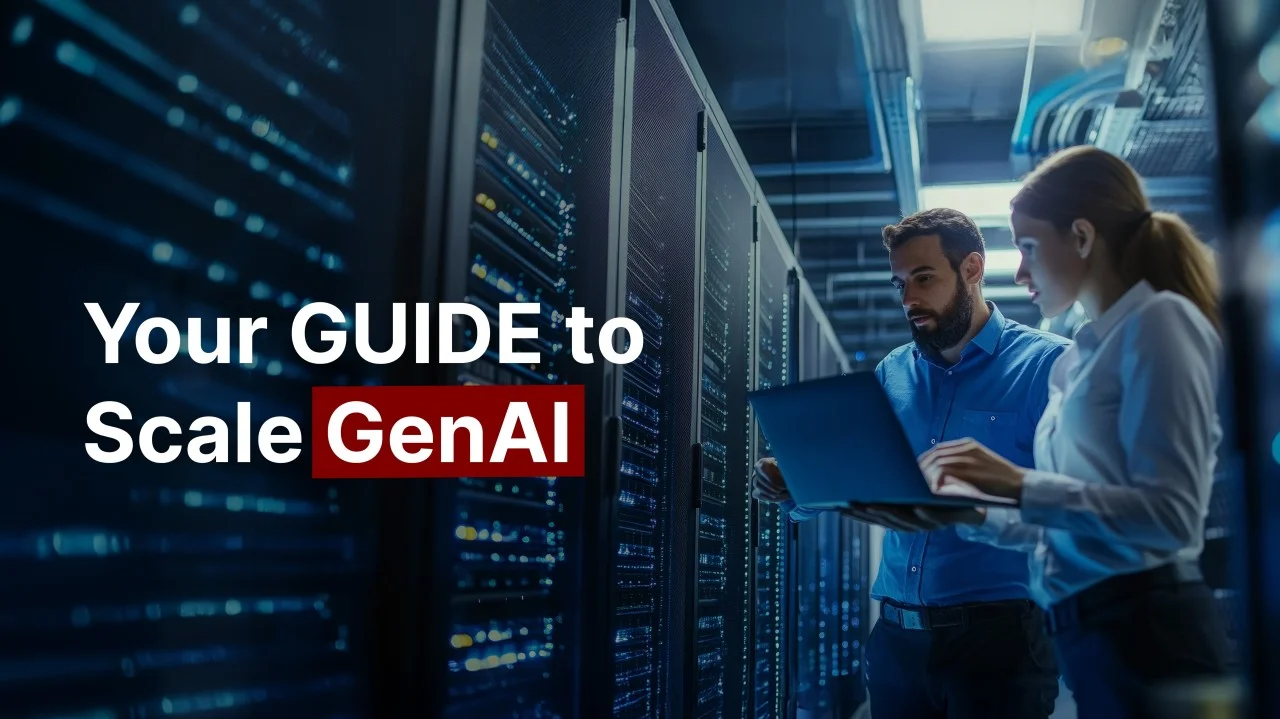The pace of innovation in generative AI (we’ll just call it “AI”) is relentless. OpenAI, Google DeepMind, Anthropic, Mistral, and Meta are in an arms race, shipping increasingly powerful foundation models with near-monthly cadence. AI copilots, search enhancements, dev tools, and autonomous agents are moving from experimentation to core product infrastructure across industries.
But building with AI is one thing. Operationalizing it at scale is another. CTOs and CPOs are tasked with ensuring that AI works reliably, adapts rapidly, and remains compliant and cost-effective across fast-moving environments. As foundational models evolve and AI-driven features touch more surfaces, enterprises need more than model APIs, they need a scalable operational strategy. That strategy is Generative AI Ops (GenAIOps).
Generative AI produces outputs that vary based on context, prompt, and data grounding, introducing variability that leads to new risks, higher complexity, and heightened governance requirements. GenAIOps extends the foundations laid by MLOps by managing not just the model itself, but the entire lifecycle surrounding it: how it’s prompted, what data informs it, how outputs are reviewed, and how performance is optimized in production.
Where the Real Complexity Lies
The core friction for enterprises isn’t in replacing one model with another. That part is relatively easy. The real challenge lies in aligning AI behavior across regions with different regulatory demands, functions with different risk appetites, and use cases that span everything from internal tooling to public-facing copilots. Data inputs are constantly shifting. Personas evolve. Regulatory environments change. And teams are under pressure to ship AI features without compromising quality or compliance.
This is where GenAIOps brings order to chaos. It offers a cohesive framework that enables organizations to decouple business logic from underlying models, treat prompts and context as first-class citizens, and establish oversight mechanisms that are proactive rather than reactive. When done right, GenAIOps makes it repeatable, measurable, and resilient.
What GenAIOps Makes Possible
At its core, GenAIOps enables three critical forms of agility. First, model abstraction decouples applications from any single LLM provider, enabling businesses to route requests across models like GPT, Claude, Gemini, or open-source alternatives. While this minimizes the need to rewrite pipelines, switching models in production still demands prompt re-tuning, output validation, and performance assurance to maintain reliability. Second, prompt and context management ensures that model inputs are version-controlled, performance-tested, and precisely mapped to each use case, supporting consistent outputs, faster iteration, and easier debugging as AI capabilities evolve. Third, governance and observability give compliance, legal, and risk teams the tools to monitor outputs, flag harmful or non-compliant behavior, and stay ahead of shifting AI regulations.
Just as important is cost and performance optimization. Running generative AI at scale is expensive, and not every task requires a state-of-the-art model. GenAIOps introduces orchestration strategies that route requests to the most efficient models available, using lighter-weight options for simpler tasks and saving heavyweight models for complex reasoning. Retrieval mechanisms reduce unnecessary inference, while fine-tuning techniques like Low-Rank Adaptation (LoRA) ensure customization is fast and efficient.
The Four Capabilities That Define GenAIOps
- Foundation model abstraction to avoid vendor lock-in and simplify model switching. For example, multi-threaded metric calculation approaches could reduce LLM runtime and unlock efficiency gains.
- Prompt and context lifecycle management for versioning, testing, and alignment across teams. Prompt templates can be versioned, reviewed, and approved through a formal signoff process, ensuring production-grade stability and repeatability.
- Governance and compliance automation to monitor hallucinations, bias, and regulatory exposure. Toxicity filters, semantic similarity scores, and feedback loops from human evaluators can be integrated to continuously validate output quality and faithfulness.
- Cost-aware orchestration enables smarter utilization by routing tasks to the most appropriate models. Lightweight models can be auto-selected for routine tasks like summarization or classification, while heavier models are reserved for complex reasoning or nuanced edge cases—balancing performance, quality, and cost across the pipeline.
While MLOps optimizes model training, deployment, and monitoring, GenAIOps expands AI operations beyond model management, integrating prompt engineering, retrieval-augmented generation, compliance automation, and content validation
From Experimentation to Enterprise-Scale Discipline
Ultimately, GenAIOps helps enterprises move from ad hoc experimentation to operational excellence. It turns scattered AI efforts into a disciplined, cross-functional system. Teams can roll out new models faster, reduce hallucinations, enforce policy, and scale with control. And as generative AI becomes foundational to how companies build, ship, and support products, that kind of repeatability becomes the difference between leading and lagging.
The next wave of AI will be about who can deliver reliably, adapt quickly, and govern responsibly. GenAIOps is the operating model that will make that possible.
What comes next? Full automation. A modular GenAIOps stack that self-monitors, self-optimizes, and keeps AI systems accurate, reliable, and compliant by design.
Are you ready for it?
About the Author:
Abhishek Chopra is a Business Unit Head at Mu Sigma who partners with companies in the retail and CPG space.


